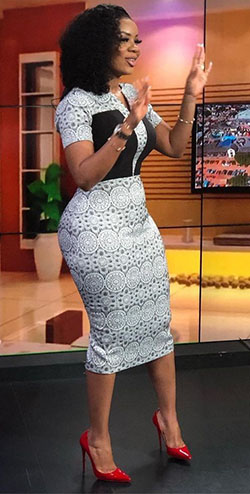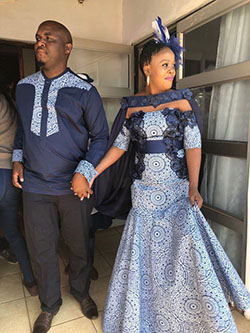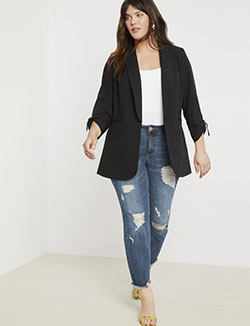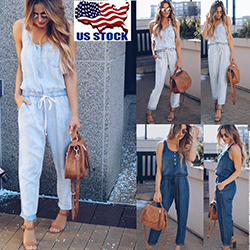
As a fashion brand, creating a unique identity is crucial to stand out in the competitive industry. Custom labels play a major role in this, serving as the 'voice' of your brand long after the purchase. The information below will walk you through the process of creating notable and effective labels.
Importance of Clothing Labels
Without question, clothing labels hold significant value that extends far beyond their modest appearance. More than just fabric sewn into your clothes, they weave the story of your brand and its values.
They are there at every step of the consumer's journey with your product, offering necessary instructions for care and serving as a constant reminder of your brand and its promise for quality. Well-designed labels bolsters brand loyalty by making customers feel part of your brand's story.
In essence, investing time and resources into creating standout clothing labels is never wasted; their importance can never be understated.
Brand Recognition and Labels
Clothing labels serve as an important identifier for consumers. When designed effectively, they act as mini billboards — giving your brand exposure each time a garment is worn or passed on.
Your logo or name printed exclusively on a label differentiates your products from others. It allows customers not only to recognize and recall your brand instantly but also helps them make decisions based on previous experiences with your products.
A strong label leaves an indelible imprint on customers' minds, bridging the gap between seeing and purchasing.
Types of Fashion Labels

The market presents you with various types of fashion labels, each serving unique purposes. This might include main labels that showcase your brand identity prominently or care labels that offer crucial guidance to customers on maintaining product longevity.
Sizing labels, another type, provide information on fit, as do label patches that add aesthetic value. Moreover, hang tags make room for more extensive branding and marketing efforts. Each has its role in the customer experience and contributes collectively to a cohesive brand image.
Picking appropriate types to match your brand needs is an artful strategy you must deploy.
Choosing Material for Labels
The material chosen for your labels sets the tone for interaction between the customer and your brand. The fabric should reflect your brand's core values—whether that's luxury, sustainability, or affordability.
If comfort is your brand's primary selling point, then opt for soft fabrics such as satin or cotton that feel gentle against the skin. For premium brands, high-end materials like silk or leather can highlight luxury and quality.
On the other hand, sustainable brands might lean towards eco-friendly materials such as organic cotton or bamboo. Choosing wisely reinforces your brand message powerfully through every detail.
Label Design Principles
A visually striking and informative label design carries an undeniable influence over consumers' purchasing decisions. Employing good design principles ensures successful communication of your brand message.
Cohesiveness is critical—your labels must form a visual connection with all other visual elements of your brand. Strive for simplicity; cluttered designs tend to miscommunicate and confuse more than they clarify.
Don't forget functionality; labels hold essential information. As such, they must be legible, making fonts and color choices instrumental. A well-designed label should guide customers smoothly from one piece of information to another.
Effective Typography in Labels
The typography chosen for your labels can have a substantial impact on the perception of your brand. Carefully chosen typography can adequately convey your brand's personality and aesthetic.
A classy script font could be perfect to promote a luxurious image, while a simple sans-serif font can express modernity and casual comfort. The size also equally matters- too small, and it becomes illegible; too large, and it's unattractive.
Remember, clarity is key. Your customer needs to understand quickly, so make sure your font choice caters to this need without compromising design.
The Role of Label Size
Size plays an essential role in the label design process. When determining size, consider its readability, placement, and its fit with garment style or accessory.
If it's too large, it may clash with your product's aesthetics or potentially irritate the consumer. On the other hand, a label that's too small may lead to crucial information like care instructions or your logo being missed.
Therefore, finding that sweet spot where aesthetically pleasing meets functional necessity is important for effective labeling.
Incorporating Brand Logo
Your brand logo forms the focal point of your label. It's likely to be the first thing a consumer notices about your label- so ensure that impression is a good one!
Juxtapose the colors wisely; after all, you'll want your logo to stand out within space constraints. In addition to color selection, ensuring clear printing and embroidery of your logo helps improve visibility and leaves a lasting impression.
Avoid overwhelming customers with excessive information—simplifying designs allows your logo to enjoy center stage on your custom label. Thus making incorporating the logo into labels not just necessary but artful as well.
Sailing Through Labeling Regulations
Safety regulations regarding clothing labels exist across the globe to protect consumers. As a brand, you must stay updated on these regulations to avoid any legal complications or reputational damage.
Most governments mandate details like fiber content, country of origin, manufacturer identity and care instructions on labels. Ignorance or negligence on your part may lead to substantial penalties—get up-to-date on the specific regulations in countries where you intend to sell.
Moreover, meeting these requirements demonstrates respect for customer safety and industry standards, which is definitely a plus for brand reputation.
Balancing Affordability and Quality
Finding the balance between quality and affordability can feel like walking a tightrope. After all, the notion that top-tier quality comes with premium pricing is quite rampant. However, maintaining this balance is crucial to achieving profitability without alienating customers who seek value-for-money.
Investing in high-quality materials for your labels means higher costs initially but can lead to greater customer satisfaction and retention long term. At this point, openness about pricing policies with clients builds trust—an essential building block for lasting client relationships.
Remember, investing in custom labels is similar to investing in your brand's future—a well-calculated risk that's absolutely worth it.
Efficiently Ordering and Reordering
An efficient order and reorder process eases regular business operations and ensures timely stocking. Develop clear communication channels with manufacturers—reducing back-and-forths over specs, schedules, or costs cuts down inefficiencies significantly.
Ensure you have enough labels in stock without overdoing it to avoid wastage. Planning ahead of time considering lead times, shipping times and any possible unforeseen cases help avoid unnecessary last-minute rushes.
Finally, maintain a positive relationship with your manufacturers. The smoother your relationship, the smoother your ordering and reordering process will be!
Implementing Quality Control
Quality control (QC) plays a pivotal role in ensuring consistency across all your labels, which is absolutely crucial for brand image and consumer trust. Implementing QC measures helps detect faults earlier, saving you from costlier corrections later on.
Work with manufacturers to establish QC checkpoints throughout the production process. Regularly review these processes to catch any potential issues before they escalate and respond quickly to consumer feedback about label quality.
Remember, your labels represent your brand and its promise for quality—a commitment that should be impeccably maintained through diligent QC practices.
Crafting Success
Carefully thought-out custom labels form vital pieces in achieving brand success within the fashion industry. Each detail inevitably adds up! From choosing appropriate types, material considerations, design elements to regulations, manufacturing partners, quality control and staying on-trend with the future of labeling—all hold immense value. So go ahead, craft your brand's success with custom labels!
















